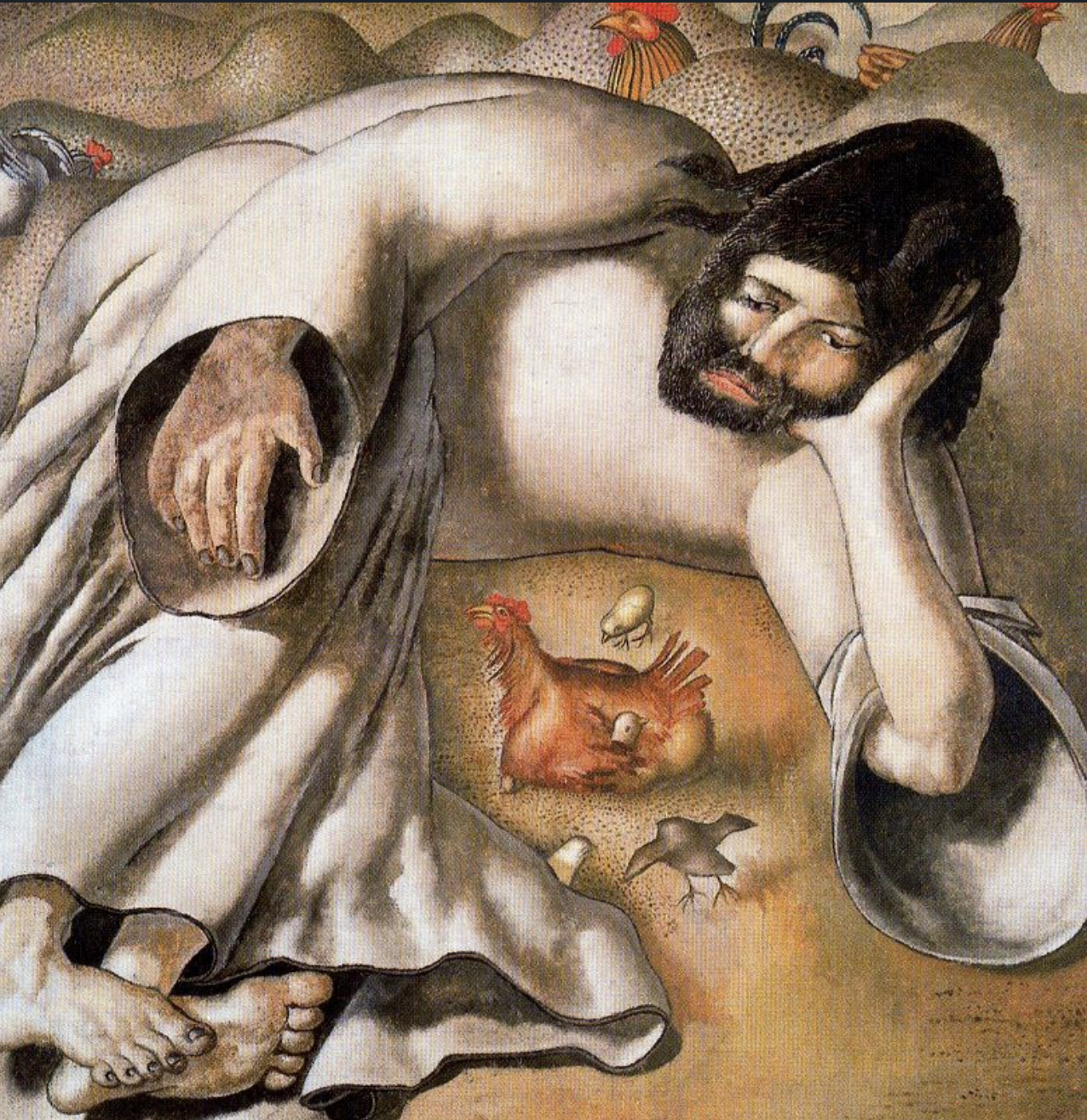
“Christ in the Wilderness -The Hen”, Stanley Spencer c. 1954, Art Gallery of Western Australia, Perth.
Stanley Spencer spent the winter of 1938/39 living alone in a room in 188 Adelaide Road near Swiss Cottage in London. There he began a series of paintings showing Christ in the wilderness. Spencer noted that in the gospels the temptations only take place at the end of the 40 days. They give no account of what happened in the wilderness before then. He decided to paint a series of 40 images of Christ in the wilderness, one for each day of Lent. Each painting was to be 22” square, and all 40 paintings were to be mounted on a ceiling and so seen together from below. He completed just 8 and left another unfinished. In this one, Christ’s body encircles the mother hen and her chicks, affording them protection. He gazes at them. One little chick peaks out at the world from under its mother’s wing, another pecks at the ground and yet another emerges from under Christ’s garment. This painting is inspired by Christ’s lament over Jerusalem recorded in both Matthew and Luke, declaring “How often have I desired to gather your children together as a mother gathers her brood under her wings” ( Mt 23: 37) The cockerels moving in the background signal to us that Spencer’s Christ is focused on the maternal love of the hen for her chicks. His longing is like that of a mother, wanting to the best for her children. Interestingly, Christ here is posed not unlike the mother of the child Jesus in a nativity scene by Giotto. In the life of a family there are moments which are precious but which the parent knows will not last. Children grow up and away. Parents grow old and die. And yet here, Spencer, who through an affair, had lost his own family home, shows this transient maternal love enfolded in Christ’s enduring love. This idea of God’s love as maternal goes back a long way. The pelican who fed her own blood to her young was a symbol of Christ for early Christians. In Chapter 60 of her “Revelations of Divine Love” Julian of Norwich describes Christ’s love in terms of a mother’s love for her children. But she notes that unlike a natural mother, who must bring us into the world to suffer and die, Christ “bears us into joy and eternal life”. “And when it was finished and he had born us to bliss, even this could not fully satisfy his marvellous love; and that he showed in these high surpassing words of love, “‘If I could suffer more, I would suffer more.’ ”
The Catholic Chaplaincy serves the students and staff of the University of Edinburgh, Edinburgh Napier University and Queen Margaret University.
The Catholic Chaplaincy is also a parish of the Archdiocese of St Andrews and Edinburgh (the Parish of St Albert the Great) and all Catholic students and staff are automatically members of this parish.